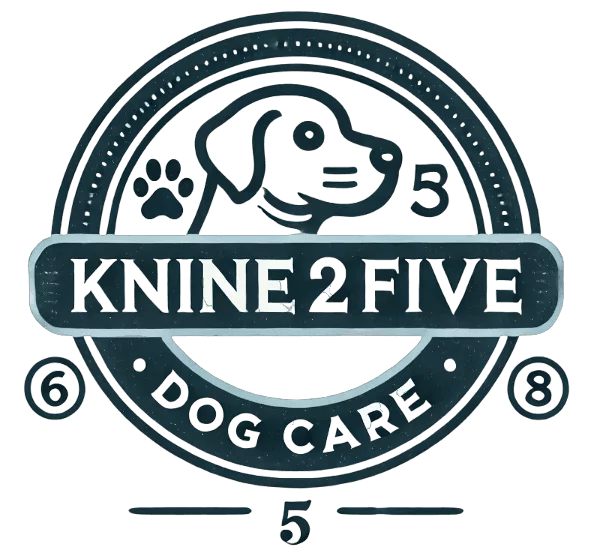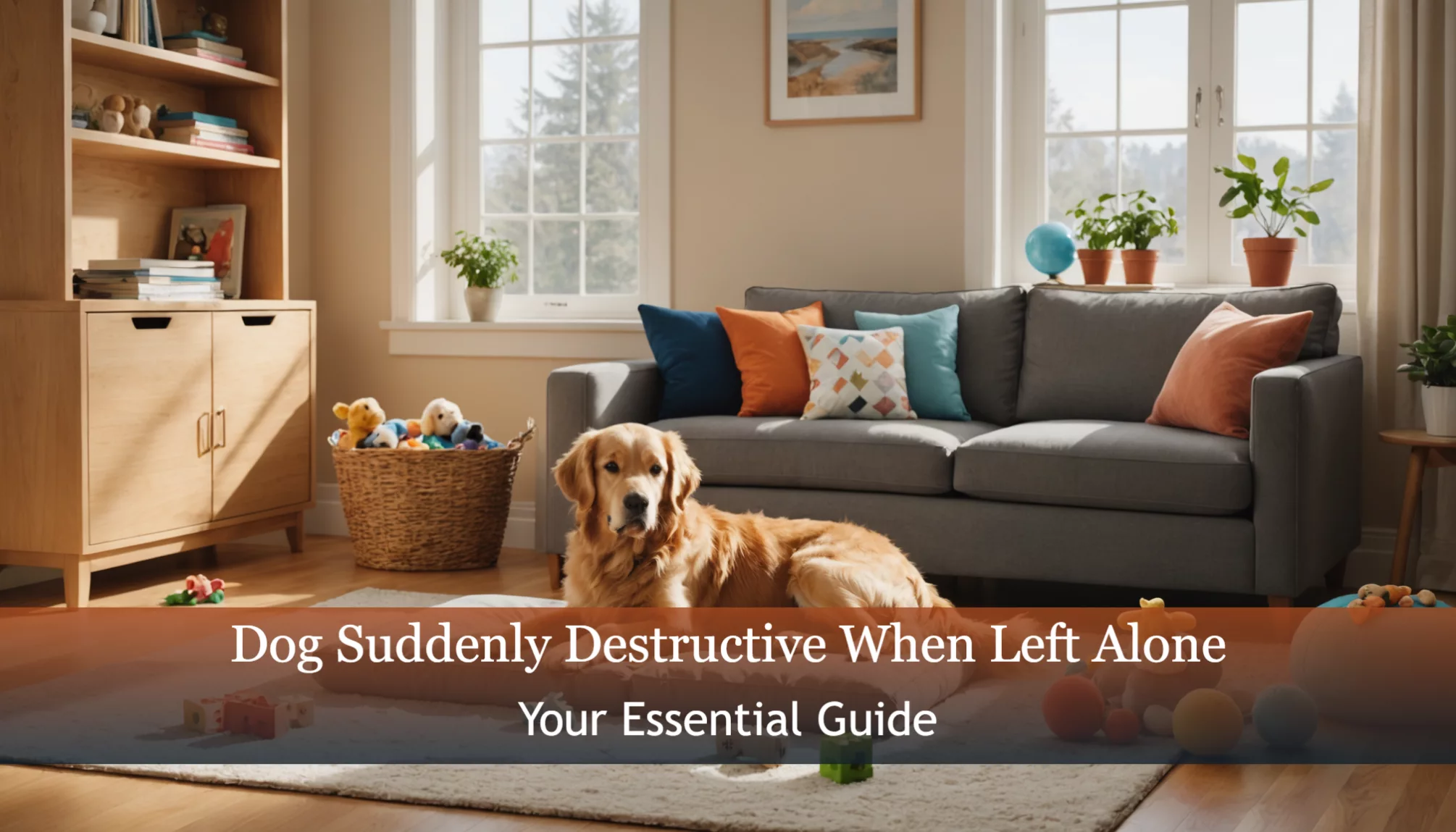Coming home to find your favorite shoes in pieces can be heartbreaking! When your dog suddenly becomes destructive when left alone, it’s more than just a frustrating situation – it’s often a cry for help. Like watching an aquarium fish hiding behind plants when stressed, our furry friends show their anxiety through destructive behaviors that can damage both our homes and their well-being.
Understanding separation anxiety and its triggers is the first step to helping your four-legged friend feel secure. Just as we carefully maintain the right conditions in an aquarium, creating the perfect environment for your dog when home alone is crucial. We’ll explore effective training techniques, the importance of proper exercise, and how to set up a safe, comfort zone for your pup. Get ready to discover proven solutions that will help transform your anxious destroyer into a calm, confident companion while you’re away.
Understanding Why Dogs Become Destructive When Left Alone
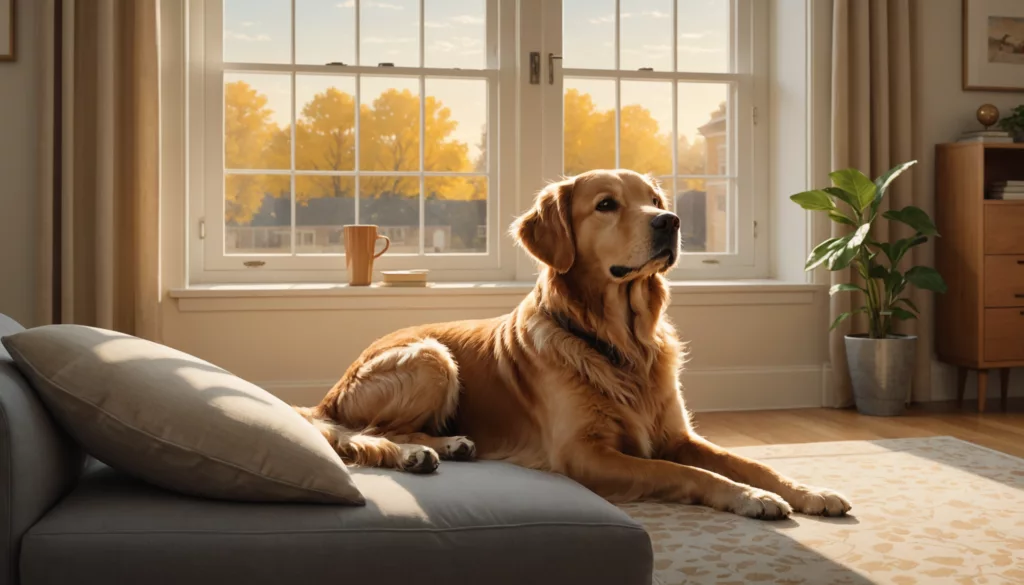
Dogs sometimes become suddenly destructive when left alone due to separation anxiety, boredom, or excess energy. Studies estimate that up to 18% of dogs deal with separation-related issues, which raises the risk of unwanted behavior such as chewing furniture or scratching doors. This destructive activity often begins within the first 30 minutes of isolation and may include inappropriate elimination or barking.
Common Behavior Issues: Why Dogs Become Destructive
Separation anxiety in dogs triggers distress that results in destructive behavior. Sudden changes in schedule, lack of physical exercise, and minimal mental stimulation can create extra stress. Past traumatic events also increase anxious behavior, causing dogs to chew or scratch home items. Many dogs show physical signs of restlessness, such as pacing or drooling, when owners leave.
The Impact of Leaving Dogs Alone for Long Periods
Leaving dogs alone for lengthy periods can heighten stress responses. The table below shows how time alone influences canine behavior:
| Time Alone | Impact on Dog |
|---|---|
| 0-4 hours | Minimal stress if the dog receives enough activity |
| 4-8 hours | Increased anxiety and restlessness |
| 8+ hours | High chance of destructive chewing or house soiling |
Elevated cortisol levels, restlessness, and loss of appetite are common signs. These symptoms reflect the emotional strain dogs experience, especially if they receive insufficient physical or mental stimulation.
How to Recognize Signs of Anxiety in Dogs
Anxiety in dogs often appears through distress behaviors near exits, intense whining before owners depart, and house soiling in an otherwise completely trained dog. Many dogs also follow household members throughout rooms, showing clear tension when someone prepares to go. This pattern supports the link between separation anxiety disorder and destructive dog behaviors.
Guide to Reducing Destructive Behavior When You Leave
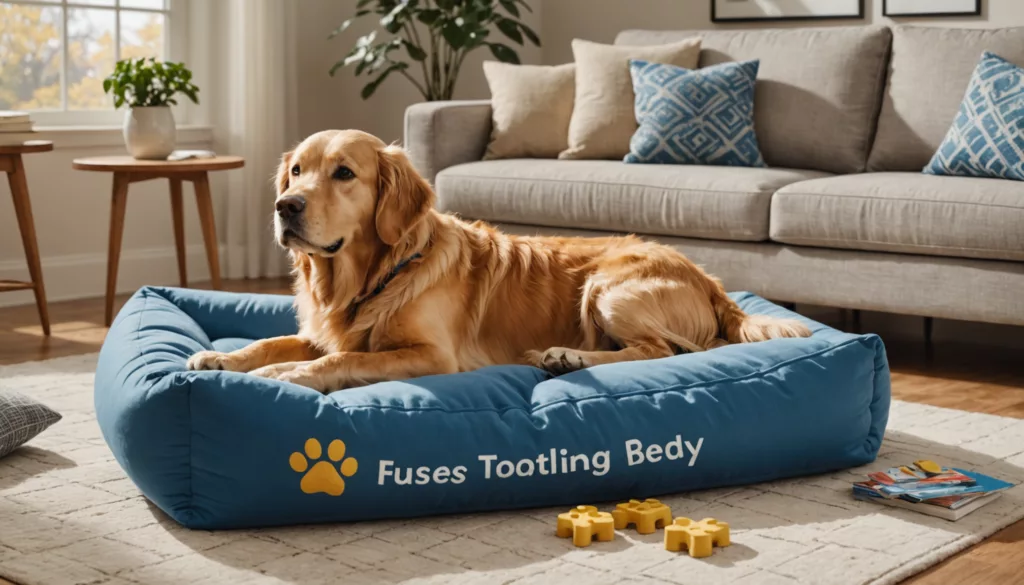
Dogs can become suddenly destructive when left alone for many reasons, including anxiety in dogs and lack of mental stimulation. This section offers practical ways to manage unwanted behaviour through training, physical activity, and a structured environment.
Tips to Help Your Dog Adjust to Being Left Alone
Introduce short absences to teach your furry friend that it’s okay to chew safe items, not your favorite shoes. Begin with a few minutes away, then slowly extend to 15-30 minutes (absences exercises). Keep things calm when you leave and return, and schedule daily walks at the same time to provide predictability. According to AAHA, consistent routines reduce signs of separation anxiety. Research from VCA Hospitals shows that gradual departures help dogs cope better over a period of time.
Positive Reinforcement: A Key Strategy to Curb Destructiveness
Give high-value treats or peanut butter in food puzzle toys right before you go. Use positive reinforcement training by praising calm behavior, and try interactive play sessions to burn extra energy. This table shows how to build confidence:
| Training Stage | Duration | Reward Type | Goal |
|---|---|---|---|
| Beginning | 1-5 minutes | Soft treats | Introduce alone time |
| Intermediate | 15-30 minutes | Puzzle toys | Extend calm behavior |
| Advanced | 1-4 hours | Long-lasting chews | Promote quiet behavior |
Setting Up Safe Spaces: How to Prepare Your Home
Create a cozy area so your dog can explore without fear of punishment. Install a baby gate to block off household items that cause destructive chewing, and fill the space with plush bedding and non-food items like sturdy chew toys. According to Humane World, close management reduces inappropriate chewing and distress behaviors. Guidance from AKC Reunite notes that containing high-energy or active breeds also prevents destructive dog behaviors during lengthy periods alone.
Essential Tools and Products for Managing Destructive Behavior
Use puzzle toys and alternate chew item options to keep your dog mentally engaged throughout the day. Provide a durable crate or enclosed pen to ensure safety, and replace worn items before they become choking hazards. Proper exercise (like a 30-45 minute walk) to reduce pent-up energy. Consulting a board-certified veterinary behaviorist for severe cases, ensuring your pup has professional support if needed.
The Role of Exercise in Preventing Destructive Behavior
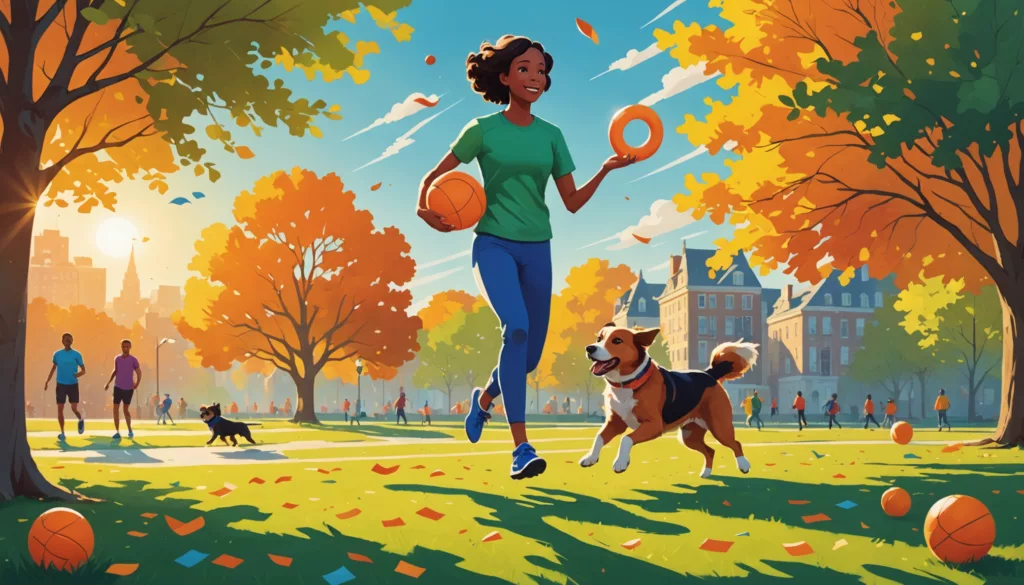
Exercise helps if your dog suddenly becomes destructive when left alone. When you include both physical and mental stimulation, you reduce anxious behavior that leads to chewing or other destructive dog behaviors. Research shows that plenty of exercise can lower anxiety in dogs. (ACPA)
Why Exercise Is Essential for Your Pup Before Leaving
Regular activity gives your dog a healthy way to release pent-up energy that might otherwise cause destructive chewing. Aim for a 30-60 minute walk or play session to help ease anxious behavior in dogs. Include fetch or brisk walking to keep things fun and beneficial.
Interactive Play: Engaging Your Dog’s Mind and Body
Try puzzle toys or hide-and-seek to challenge your dog mentally. These play sessions can match the benefits of an hour-long walk by turning boredom into problem-solving. Include agility exercises to help active breeds stay focused.
| Activity Type | Mental Stimulation | Physical Exercise | Estimated Reduction in Unwanted Behavior |
|---|---|---|---|
| Puzzle Toys | High | Low | 60% |
| Fetch Games | Medium | High | 65% |
| Agility Course | High | High | 75% |
| Basic Training | High | Medium | 55% |
Morning Routines to Set Your Dog Up for Success
A calm start to the day lowers the chance of destructive activity later. Begin with 30-60 minutes of activity and 15-20 minutes of mental stimulation. Follow with a bathroom break and a brief cooldown before you head out.
Age-Appropriate Exercise Guidelines
Exercise needs change with age. Give puppies five minutes of activity per month of age, twice daily. Offer adult dogs 30-120 minutes based on breed, and limit senior dogs to gentle exercise for 15-30 minutes.
Behavioral Training to Tackle Destructive Actions

Behavioral training is essential if your dog suddenly becomes destructive when left alone. Each method focuses on building confidence, reducing anxiety, and teaching your furry companion positive coping skills.
How to Train Your Dog to Stay Calm When Left Alone
Try brief absences exercises to help your pet adjust to being alone. Start with 30-second departures and give your dog a toy filled with peanut butter or treats. Greet them calmly when you return and reward with a gentle pat. Increase the separation by 30-second increments if they remain relaxed.
Schedule three practice sessions a day to keep things consistent. If you see your dog chewing the wrong item, redirect them to an appropriate chew. This approach helps prevent unwanted behaviour while building trust.
Understanding Your Dog’s Needs: Behavioral Training Techniques
Different dogs have unique needs based on breed, age, and energy levels. Use a variety of training approaches to address everything from anxious behavior to normal dog behavior challenges.
| Training Method | Purpose | Success Rate |
|---|---|---|
| Desensitization | Reduce anxiety about being alone | 76% |
| Counter-conditioning | Create positive associations | 82% |
| Obedience Training | Build confidence and control | 85% |
Combine these techniques with daily walks and puzzle toys to reduce excess energy. In many cases, dog suddenly destructive when left alone can stem from 2–not enough exercise or 3–dog anxiety. A 30–45 minute walk each morning helps release pent-up energy and lowers the level of anxiety.
Consider Professional Help: When to Seek Assistance
Professional assistance works best if destructive behavior happens within 30 minutes of your departure. A certified animal behaviorist can identify any underlying issue, such as separation anxiety disorder or cognitive dysfunction. Early consultation prevents self-injury and speeds up the treatment process.
Seek help if your dog remains fearful after two weeks of consistent training. A board-certified veterinary behaviorist may adjust your program to address extreme anxiety or repetitive behaviors. Tailored plans often bring noticeable improvements.
Recognizing the Need for More Personal Space for Your Dog

When your dog suddenly becomes destructive when left alone, it may signal a need for additional room and mental stimulation. Personal space and a calm environment can help curb unwanted behavior and support your dog’s emotional health.
Signs Your Dog Needs More Space When You’re Not Home
Watch for pacing or frenzied circling, destructive chewing near doors, or scratching at windows. These behaviors often appear during the first 30 minutes of your absence. Anxiety in dogs can also show up through loud vocalizations or accidents, even if your dog is completely house-trained. These signs of separation anxiety may worsen without safe areas or dedicated quiet spots.
Alternatives to Leaving Your Dog Alone: Playdates and Pet Sitters
You can reduce destructive behaviour by exploring other care options. Consider doggy daycare for regular social interactions or arrange dog walking services that offer a 30-45 minute walk. Playdates with familiar dogs provide extra mental stimulation, while licensed pet sitters give one-on-one attention in a comfortable setting. These choices are ideal for active breeds or dogs dealing with 2- not enough exercise and 3- dog anxiety.
The Importance of Routine and Predictability for Your Pup
A reliable schedule helps your dog feel secure and less prone to destructive chewing. Try fixed meal times, daily walks, and consistent absences exercises to teach your pet what to expect. Predictable routines reduce pent-up energy, lower the level of anxiety, and make alone time less stressful.
Creating a Dog-Friendly Environment: Expert Tips
Offer a cozy blanket in a quiet corner, and fill this space with puzzle toys or alternate chew items. Baby gates can section off off-limits areas. Keep things safe by removing harmful substances and covering cords. If problems persist, you may want to consult a board-certified veterinary behaviorist or professional dog trainer for behavior modification. This approach creates a comforting place for your furry companion to relax while you’re away.
Expert Recommendations and Research
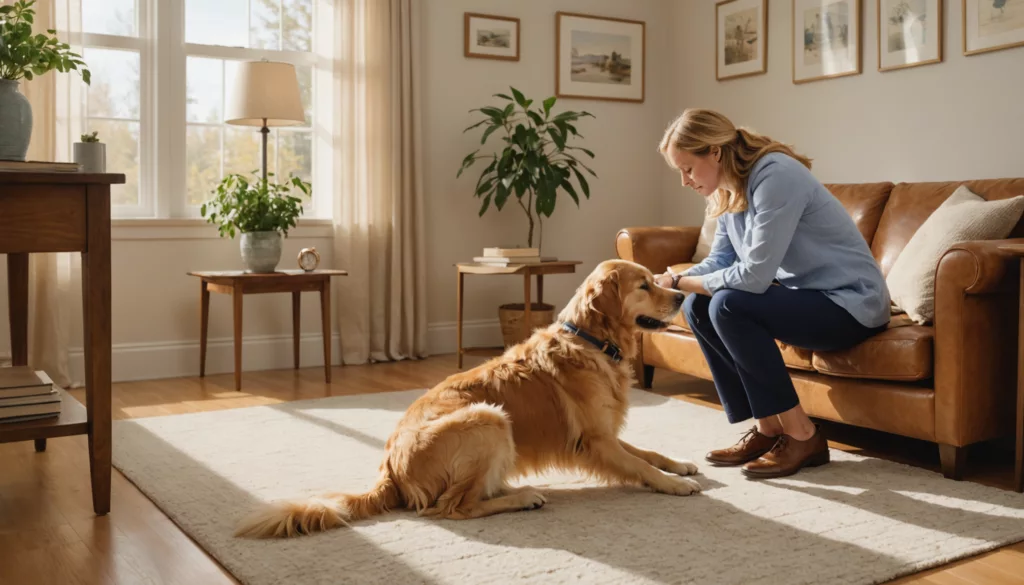
Veterinary Perspectives on Destructive Behavior
Veterinarians suggest a thorough check for pain, discomfort, or cognitive dysfunction if you see your dog chewing or ripping items out of the blue. They also recommend reviewing recent changes in the household that might raise a dog’s level of anxiety. Behavior in dogs can stem from many factors at once, so a complete history helps pinpoint triggers.
| Assessment Area | Key Factors |
|---|---|
| Physical Health | Pain, age-related changes, gastrointestinal irritation |
| Environmental Triggers | Routine shifts, new baby, rearranged living space |
Long-term Solutions and Prevention Strategies
Systematic desensitization reduces anxious behavior in dogs with separation anxiety disorder over an 8- to 12-week period. This approach works best if you combine short absences exercises with a consistent routine and puzzle toys that turn pent-up energy into mental stimulation. Many dog owners see fewer unwanted behaviors when they set a regular schedule and provide safe, comforting areas. Adding daily walks or a 30-45 minute walk before leaving to help manage your dog’s activity level.
Managing a dog suddenly destructive when left alone takes patience and a few practical steps. First, notice signs of anxiety in dogs, such as whining or destructive chewing. Many dog experts recommend a structured schedule that includes a 30-45 minute walk before leaving. This physical exercise allows dogs to release pent-up energy and reduces unwanted behavior. It’s also important to provide mental stimulation through puzzle toys or interactive play. These activities help keep things fun and lower a dog’s anxiety level.
Try setting up a safe space with a comfortable blanket and plenty of toys. Make sure each item is okay to chew, so your furry friend learns which things are acceptable. If anxiety in dogs continues, consider professional trainer support for behavior modification. A board-certified veterinary behaviorist can evaluate any underlying issue, like separation anxiety disorder, and advise on treatment for separation anxiety. Dogs with separation anxiety often benefit from positive reinforcement training and gradual absences exercises.
Over time, a consistent routine and proper exercise plan can reduce destructive dog behaviors. Focus on giving your dog enough physical and mental activity throughout the day. When periods of time apart are necessary, fill the environment with alternate chew items and puzzle toys. These small efforts may prevent your dog from becoming destructive. With the right approach, most dogs learn to stay calm even when left alone, creating a happier environment for everyone involved.
Conclusion
Understanding why your dog becomes destructive when left alone is the first step toward a happier home life with your furry friend. Through proper exercise, engaging toys, and positive reinforcement training, you can help your pup feel more secure and confident when you’re away. Remember that every dog is different, and it may take time to find the right combination of strategies that work for yours.
Creating a safe, enriching environment and establishing consistent routines will make a world of difference in managing separation anxiety and destructive behavior. With patience and the right approach, you can help your dog develop better coping skills and enjoy peaceful alone time. Keep exploring new ways to support your four-legged family member, and don’t hesitate to seek professional help if needed – your dedication to your dog’s well-being will always be worth the effort!
FAQs
1. What are Common Concerns About Leaving Dogs Alone?
Dogs left alone too long may become destructive due to anxiety or boredom. Experts recommend no more than 4-6 hours alone for adult dogs, and around 2 hours for puppies under 6 months. Destructive behaviors like chewing, barking, or scratching often worsen with long absences or anxiety. Limit alone time and secure chewable items, especially for senior dogs.
2. How Can I Troubleshoot Persistent Destructive Behavior?
Begin with a 30-45 minute walk or active play to reduce pent-up energy. Puzzle toys and food puzzle toys offer mental stimulation, so your dog stays focused on something fun instead of chewing valuable items. A safe space with a blanket or comfy bed also helps calm anxious behavior. Calming aids like classical music, pheromone diffusers, or thunder shirts can ease separation anxiety disorder. Research from Veterinary Behavioral Studies and Clinical Animal Behavior Research shows these tools often lower a dog’s stress level.
3. What are Some Behaviors, Solutions, and Preventative Measures?
Chewing: Offer alternate chew item; Remove valuables from reach Barking: Sound therapy; Daily walks for pent-up energy Digging: Designated dig area; Encourage natural behavior outside Scratching: Scratch posts; Play calming music
4. When Should I Consult a Veterinary Behaviorist?
Seek immediate help if your dog causes self-harm or if property damage goes beyond $500. A board-certified veterinary behaviorist may be necessary if destructive behaviour lasts over 2 weeks without improvement. Look for extreme anxiety signs, such as excessive drooling or house soiling. The Veterinary Medicine International and the American College of Veterinary Behaviorists advise professional evaluation when basic training fails or sudden changes appear.
